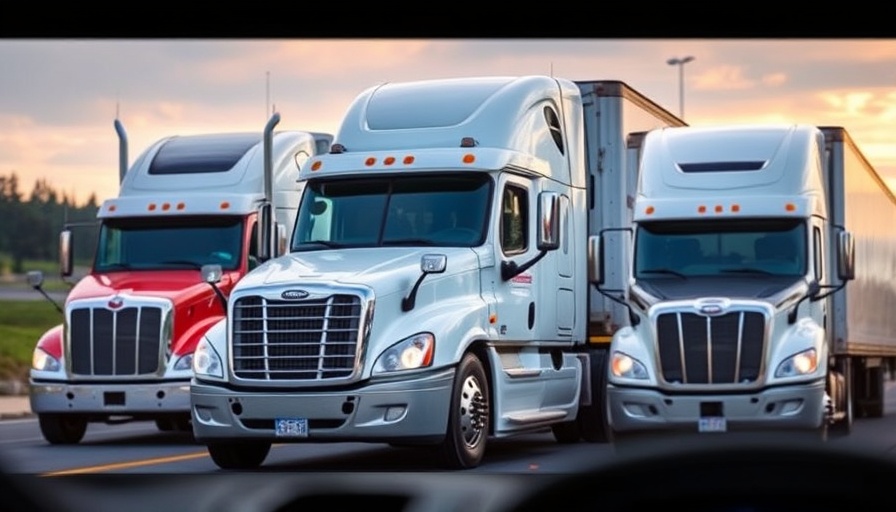
New Legislation Challenges Speed Limiter Safety Standards
In a move that has generated significant debate in the transportation sector, Representative Josh Brecheen (R-OK) has reintroduced the Deregulating Restrictions on Interstate Vehicles and Eighteen-Wheelers (DRIVE) Act (H.R. 2819), seeking to block federal attempts to mandate speed-limiting technologies on large trucks and buses. This legislation arrives in a time when discussions of vehicle safety and regulatory oversight are more pertinent than ever, particularly under the Biden administration's plan to update safety regulations.
Understanding Speed Limiters: A Double-Edged Sword?
Proponents of speed limiters argue that these devices could enhance safety by controlling the maximum speeds of heavy vehicles, potentially reducing the severity of accidents. However, detractors, including Brecheen, consider such regulations an overreach that may inadvertently increase the risk of accidents. This position is echoed by industry voices like Todd Spencer, president of the Owner-Operator Independent Drivers Association, who suggests that limiting truck speeds below the flow of traffic could create dangerous interactions between vehicles.
The Regulatory Landscape: What’s at Stake
The Federal Motor Carrier Safety Administration (FMCSA) has been working since 2016 to advance the proposed rule on speed limiters, following a notice of proposed rulemaking in May 2022. But with nearly 16,000 comments received on the latest proposal, the public response highlights the complexity of implementing such regulations. Many stakeholders voice concerns that a one-size-fits-all approach to speed limits could have unintended consequences for road safety, particularly in diverse driving environments across the nation.
Industry Reactions: A Divided Front
Support for the DRIVE Act indicates a fracture within the trucking community. While organizations like the American Trucking Associations have backed FMCSA's initiatives, smaller trucking operators and independent drivers see the proposed regulations as detrimental. This division reflects a broader tension between safety and operational efficiency that business owners and operators in the industry must navigate.
Considering Future Transport Safety Trends
As technology progresses, the future of trucking safety may hinge on more than just speed limiters. Innovative solutions integrating advanced driver-assistance systems (ADAS) might offer a balanced approach to improving safety without imposing stringent speed limits. Furthermore, ongoing discussions around the DRIVE Act highlight not just legislative priorities but also the urgent need for dialogues aimed at enhancing safety while considering the operational realities of trucking.
As the transportation industry evolves, the implications of this legislation could reach beyond just trucks and buses. The outcome of these discussions will likely influence regulatory trends applicable to various sectors, shaping not only safety standards but also the future structure of the transportation ecosystem.
Final Thoughts: Safety Versus Regulation
Whether it’s through speed limiters, advanced technologies, or any new wave of regulations, the core mission remains the same: to protect lives on the road. Stakeholders, whether industry professionals or everyday citizens, must remain engaged in these dialogues to advocate for solutions that prioritize both safety and practical realities. The decision-making process here will reveal much about how we view safety and regulation in today's fast-paced world, serving as a crucial learning opportunity for all involved.
 Add Row
Add Row  Add
Add 




 Add Row
Add Row  Add
Add 

Write A Comment